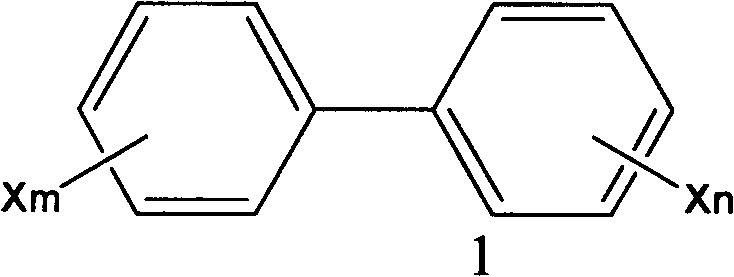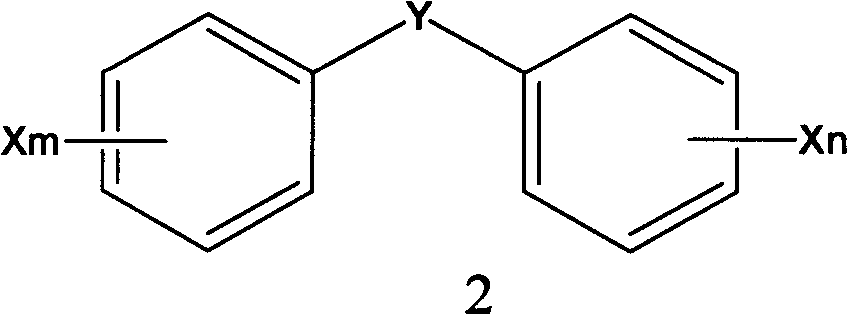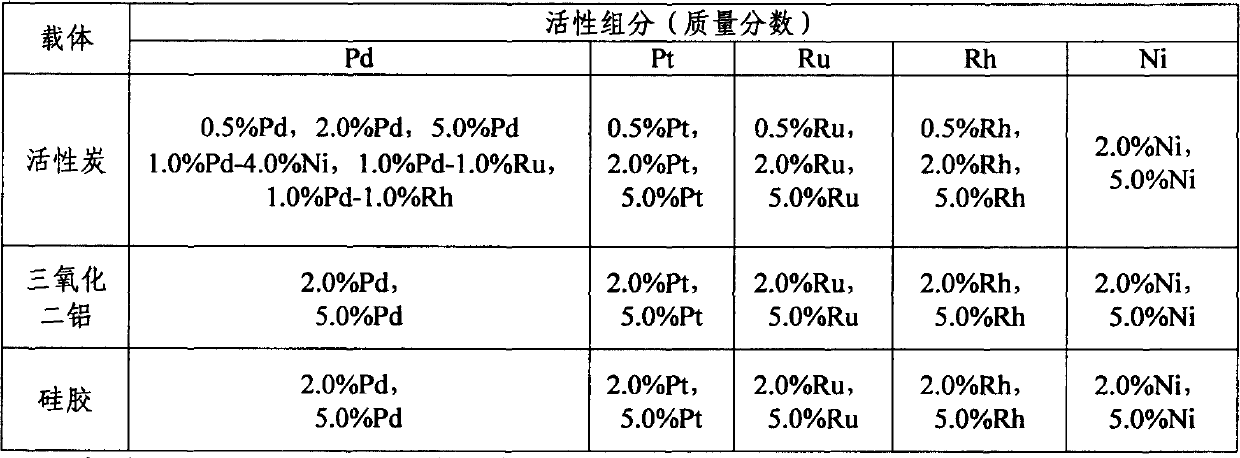Method for high-efficiency degradation of persistent organic chloridized pollutant
A persistent and pollutant technology, which is applied in the field of degradation of organic chlorinated pollutants, can solve unreported problems and achieve the effects of reducing environmental pollution, improving stability and saving dosage
- Summary
- Abstract
- Description
- Claims
- Application Information
AI Technical Summary
Problems solved by technology
Method used
Image
Examples
Embodiment 1
[0023] The preparation of embodiment 1 catalyst
[0024] Dissolve a certain amount of palladium chloride in concentrated hydrochloric acid, dilute it with water and impregnate it into activated carbon, then evaporate to dryness under constant stirring. The obtained solid is ground into powder, then reduced by hydrogen gas, and finally sealed and stored to obtain palladium / carbon catalysts with different contents. Catalysts with different supports and different active components were prepared as described above (see Table 1).
[0025] Table 1 Catalysts with different supports and different active components
[0026]
Embodiment 2
[0027]The preparation of embodiment 2Raney Ni catalyst
[0028] In a 4L beaker, dissolve 380g of sodium hydroxide in 1.5L of distilled water, stir, and cool to 10°C on an ice bath. Under stirring, add 300g of nickel-aluminum alloy to the lye in small quantities in batches, and the speed of adding should be controlled so that the temperature of the solution does not exceed 25°C (on an ice bath). When all the addition was complete (about 2 hours), the stirring was stopped, the beaker was taken off from the ice bath, and the reaction solution was allowed to rise to room temperature. When the hydrogen generation is slow, it can be heated slowly on a boiling water bath (avoid heating up too fast, in case there are too many bubbles, and the reaction solution overflows), until the generation of the bubbles slows down again (about 8-12 hours, the volume of the solution at this time It should be kept basically constant by adding distilled water). Then stand still, allow the nickel po...
Embodiment 3
[0029] Hydrodechlorination of polychlorinated biphenyls in different organic phases of embodiment 3
[0030] Take by weighing the 5.0%Pd / C catalyst that 25mg embodiment 1 prepares respectively, join in the there-necked flask of 100ml, add the PCBs solution 30ml that concentration is 2.5g / L in each three-necked flask, the above-mentioned gained catalyst is respectively in different organic React in phase, organic phase solvent is benzene, toluene, xylene, normal hexane, cyclohexane, isooctane, normal heptane or cyclopentane, and aqueous phase volume is 30ml, and added alkali is sodium hydroxide, and the The addition phase transfer agent was tetraethylammonium chloride, the reaction temperature was controlled at 40°C, the reaction pressure was normal pressure, and the reaction was stirred with a magnetic stirrer and hydrogen was passed through. The specific results are shown in Table 2. (Because the transformer oil is a polychlorinated biphenyl mixture, the amount of various sub...
PUM
 Login to View More
Login to View More Abstract
Description
Claims
Application Information
 Login to View More
Login to View More - R&D
- Intellectual Property
- Life Sciences
- Materials
- Tech Scout
- Unparalleled Data Quality
- Higher Quality Content
- 60% Fewer Hallucinations
Browse by: Latest US Patents, China's latest patents, Technical Efficacy Thesaurus, Application Domain, Technology Topic, Popular Technical Reports.
© 2025 PatSnap. All rights reserved.Legal|Privacy policy|Modern Slavery Act Transparency Statement|Sitemap|About US| Contact US: help@patsnap.com



